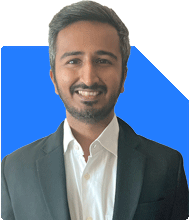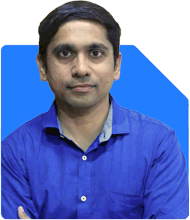I am 57 years old. After 5 years I want income 5 lakh per month. How and where to invest to get 5 lakh income per month.
Ans: Planning for a secure and comfortable future is essential, especially as you approach retirement. Ensuring a monthly income of Rs. 5 lakh within five years is an ambitious goal, but achievable with the right strategy. Below, we’ll explore various investment options and strategies to help you reach this goal.
Understanding Your Financial Goals
To achieve Rs. 5 lakh per month, you need a clear understanding of your financial goals. This involves assessing your current financial situation, expected expenses, and desired lifestyle post-retirement. It’s important to determine the total corpus required to generate this income through careful planning and projections.
Risk Assessment and Investment Horizon
At 57, your risk tolerance is likely moderate. Balancing risk and returns is crucial. Your investment horizon is five years, meaning you need to invest in options that provide substantial growth without exposing you to excessive risk.
Importance of Diversification
Diversification reduces risk by spreading investments across various asset classes. This ensures that poor performance in one area doesn’t drastically impact your overall portfolio. A well-diversified portfolio is key to achieving stable returns.
Equities: The Growth Engine
Equities can be a significant part of your investment portfolio. They offer the potential for high returns, which is essential to meet your goal. Actively managed equity mutual funds, where a professional fund manager makes investment decisions, can be a good choice. These funds have the potential to outperform the market, providing higher returns than passive index funds.
Benefits of Actively Managed Funds
Professional Management: Fund managers use their expertise to select high-performing stocks.
Potential for Higher Returns: Active funds aim to beat the market, unlike index funds that just track it.
Flexibility: Managers can adjust the portfolio in response to market changes.
Debt Instruments: Stability and Safety
Debt instruments provide stability and lower risk. They should form a significant part of your portfolio to ensure capital preservation and steady income. Examples include government bonds, corporate bonds, and debt mutual funds.
Benefits of Debt Mutual Funds
Regular Income: Debt funds provide regular interest income.
Lower Risk: They are less volatile compared to equities.
Liquidity: Debt funds offer easy liquidity, allowing access to your money when needed.
Systematic Withdrawal Plans (SWP)
Systematic Withdrawal Plans from mutual funds can provide regular income. You can invest a lump sum in a mutual fund and withdraw a fixed amount monthly. This ensures a steady cash flow while your investment continues to grow.
Benefits of SWPs
Regular Income: Provides a fixed monthly income.
Tax Efficiency: Capital gains are taxed favorably compared to interest income.
Flexibility: You can adjust the withdrawal amount as needed.
Balancing Equity and Debt
A balanced approach is crucial. Typically, a 60:40 or 50:50 equity-to-debt ratio is advisable for someone close to retirement. This provides growth potential while ensuring stability and safety.
Mutual Funds: A Closer Look
Mutual funds offer a range of options suitable for different risk profiles and investment goals. Actively managed funds, including equity and balanced funds, can provide the growth needed to achieve your goal. Debt funds offer the stability and regular income required for retirement.
Benefits of Mutual Funds
Professional Management: Fund managers have the expertise to make informed investment decisions.
Diversification: Mutual funds invest in a variety of securities, spreading risk.
Flexibility: They offer different schemes to suit various investment needs and risk appetites.
Importance of Regular Reviews
Regularly reviewing your investment portfolio ensures it remains aligned with your goals. Markets and personal circumstances change, and your portfolio should be adjusted accordingly. This involves assessing the performance of your investments and rebalancing the portfolio if necessary.
Tax Planning
Effective tax planning is essential to maximize your returns. Different investment options have different tax implications. Understanding these can help you make tax-efficient investment decisions.
Tax-Efficient Investment Strategies
Equity Mutual Funds: Long-term capital gains (LTCG) up to Rs. 1 lakh are tax-free. Gains above this are taxed at 10%.
Debt Mutual Funds: LTCG from debt funds are taxed at 20% with indexation benefits, reducing the tax liability.
SWPs: Provide regular income while being tax-efficient due to favorable treatment of capital gains.
Contingency Planning
Having an emergency fund is crucial. It ensures you have access to funds in case of unexpected expenses without disrupting your investment plan. Typically, an emergency fund should cover 6-12 months of expenses.
Professional Guidance
Working with a Certified Financial Planner (CFP) can provide personalized advice tailored to your financial situation and goals. A CFP can help create a comprehensive financial plan, select appropriate investments, and provide ongoing support.
Conclusion
Achieving a monthly income of Rs. 5 lakh in five years requires careful planning, disciplined investing, and regular reviews. By understanding your financial goals, assessing your risk tolerance, and diversifying your investments, you can create a robust investment strategy.
Key Takeaways
Diversify Your Portfolio: Spread investments across equities and debt.
Opt for Actively Managed Funds: Leverage professional expertise for higher returns.
Utilize SWPs: Ensure regular income through systematic withdrawals.
Regularly Review Your Portfolio: Adjust investments as needed.
Plan for Taxes and Contingencies: Maximize returns through tax-efficient strategies and maintain an emergency fund.
Action Plan
Assess Your Financial Situation: Understand your current assets, liabilities, and income needs.
Set Clear Goals: Define your desired monthly income and the total corpus required.
Create a Diversified Portfolio: Invest in a mix of equities and debt instruments.
Opt for Actively Managed Funds: Choose funds managed by professionals for better returns.
Implement SWPs: Set up systematic withdrawals to ensure regular income.
Review and Adjust Regularly: Monitor your portfolio and make necessary adjustments.
Seek Professional Advice: Work with a Certified Financial Planner for personalized guidance.
By following these steps, you can work towards achieving your goal of Rs. 5 lakh monthly income. Stay committed to your plan, make informed decisions, and adjust as needed. Your financial future can be secure and comfortable with the right approach.
Best Regards,
K. Ramalingam, MBA, CFP,
Chief Financial Planner,
www.holisticinvestment.in











.jpg)




















